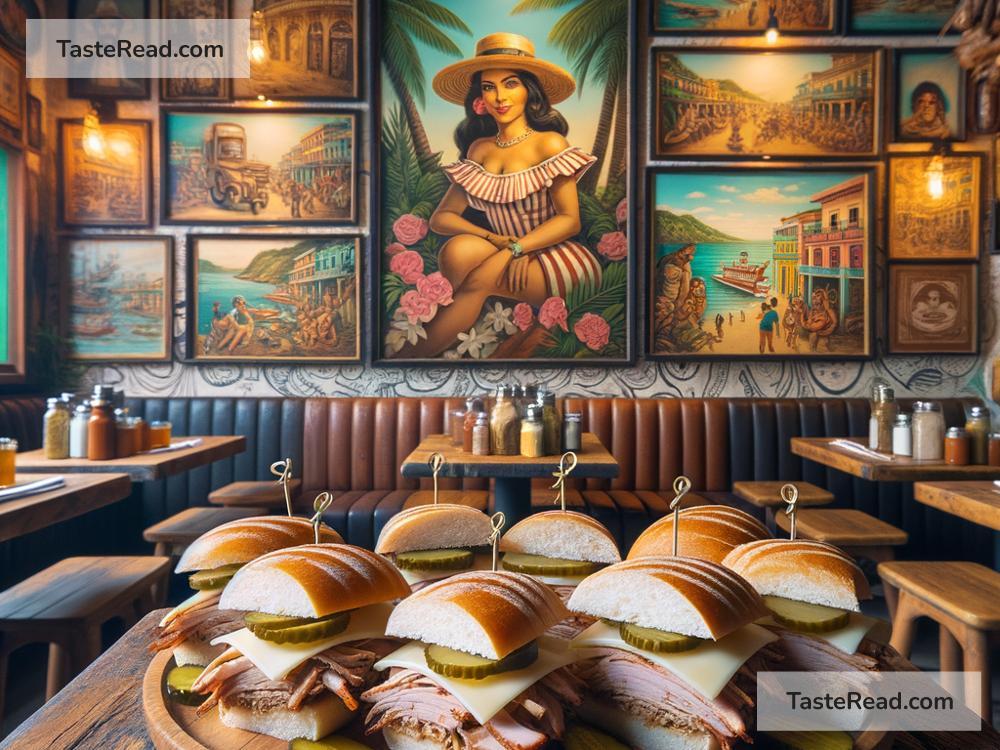The Origins of the Cuban Sandwich: A Taste of History
The Cuban sandwich, often called a “Cubano,” is one of the most delicious and iconic sandwiches in the world. Its crispy bread, flavorful pork, melted cheese, tangy pickles, and yellow mustard make for an unforgettable bite. But while people know the sandwich for its incredible taste, they may not know where it comes from or how it became a famous food everywhere. Let’s dig into the history of the Cuban sandwich and learn how it became the star of menus in Florida and beyond.
A Sandwich with Roots in Cuba
As the name suggests, the Cuban sandwich began in Cuba. It evolved from a simple meal for workers and everyday people who needed something quick, filling, and tasty to eat. The basic ingredients that make the Cuban sandwich today—bread, pork, cheese, and pickles—were common in Cuba because they were affordable and easy to find.
The bread used in a Cuban sandwich is called “Cuban bread,” which has light and airy texture with a crispy crust. This bread is said to have originated in Cuba in the late 1800s. It’s similar to French and Italian bread but has a unique recipe that adds lard to the dough, giving the loaf a slightly richer flavor. For Cubans, this was the perfect bread for making sandwiches.
The Migration to Florida
While the Cuban sandwich began in Cuba, it didn’t truly find fame until immigrants brought it to Florida. In the late 19th and early 20th centuries, many Cubans moved to Tampa, Florida, seeking work and better opportunities, especially in the cigar industry. At the time, Tampa was home to Ybor City, a thriving community known for its cigar factories. Cuban workers brought their food traditions with them, including the sandwich now linked closely with their homeland.
In Tampa, the Cuban sandwich became a popular lunch option for factory workers. Its hearty ingredients made it filling, and it was easy to carry and eat on the go. It quickly gained popularity not just with Cubans but also with other groups living in Tampa, such as Spanish, Italian, and even German immigrants.
The Tampa Twist: Adding Salami
There’s an often-debated question among food lovers: Is the “real” Cuban sandwich from Tampa or Miami? Tampa has a strong claim because the sandwich was widely sold there early on. Plus, Tampa’s version of the Cuban sandwich includes a special ingredient: salami. Why salami? It’s because Tampa was home to a diverse group of immigrants, including Italians, who introduced salami as a new flavor to the sandwich. For this reason, Cuban sandwiches in Tampa are slightly different from those in Miami, where salami is often left out.
Tampa locals may argue that their version is truer to history because it reflects the multicultural community of Ybor City at the time. However, Miami’s version is also beloved by many, and the fight over which city makes the “real” Cuban sandwich remains a fun (and friendly) food debate.
Miami and the Cuban Sandwich Boom
While Tampa helped launch the Cuban sandwich in the United States, Miami gave it global fame. When large numbers of Cubans fled to Miami after Fidel Castro took power in the 1950s, the Cuban sandwich became a symbol of home and heritage. Cuban restaurants in Miami began to feature the sandwich prominently, and locals and tourists alike fell in love with its bold flavors.
Restaurants in Miami stuck to the traditional Cuban-style recipe: roast pork (sometimes called “lechón”), ham, Swiss cheese, pickles, mustard, and no salami. The sandwich is typically prepared by layering the ingredients between slices of Cuban bread and pressing it using a sandwich press called a “plancha.” This pressing process gives the bread its signature crunch and brings all the ingredients together in a hot, melty bite.
Not Just a Sandwich—A Cultural Icon
The Cuban sandwich is more than just food—it’s a symbol of Cuban culture and the immigrant story. It represents how Cubans adapted their traditions to life in the United States while staying connected to their roots. It’s also a symbol of the blending of cultures, as seen in Tampa’s addition of salami. Today, Cuban sandwiches can be found all over the U.S., from food trucks to fancy restaurants, offering people everywhere a taste of Cuban tradition.
Conclusion
The Cuban sandwich started as a humble meal made in Cuba but grew into a cultural icon in Florida. As Cuban immigrants brought their food to places like Tampa and Miami, the sandwich evolved and gained widespread popularity. Whether you prefer the Tampa-style Cuban sandwich with salami or the Miami-style version without it, one thing is clear: the Cuban sandwich is a delicious piece of history that connects people to their heritage and gives everyone a reason to smile. So, the next time you take a bite of a Cubano, remember its rich story and the people who made it famous!

